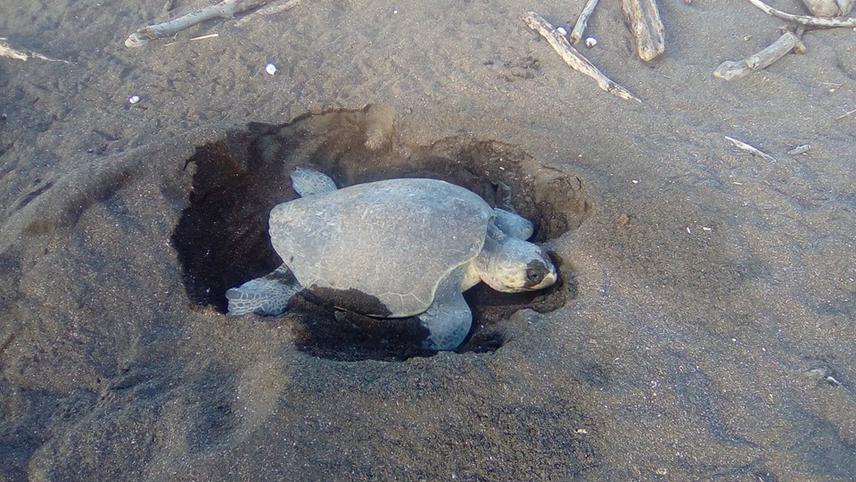Marc Ward
Other projects
The goals are to protect endangered sea turtle eggs from illegal take by patrolling nesting beaches and conservation education programs.

Daytime nesting event Punta Pargos 2017.
Punta Pargos is located on the Pacific Ocean about 100 km south of the Nicaragua border. The study area is located in the Santa Cruz Canton, NW Tempisque District, Guanacaste, Costa Rica. Punta Pargos is one of the farthest western points in Costa Rica, with regional currents that direct migratory marine turtles to nest in the area.
Green turtles foraging and nesting in Central American waters are subject to the highest human-caused impact in their Eastern Pacific range (western Mexico and Central America, and the Galapagos Islands) which includes the Punta Pargos area (Hart, et al. 2015 http://dx.doi.org/10.1371/journal.pone.0116225). Leatherback populations in the nearby Parque Nacional Marino las Baulas have declined more than 95% in the last three generations (http://www.iucnredlist.org/details/46967807/0 supplement Table 1), so every nest saved in this region is critically important.
Punta Pargos is one of only six significant nesting areas in the country for the endangered Eastern Pacific Green sea turtle (State of the World’s Sea Turtles 10th Anniversary Report 2014-15). Leatherbacks have also historically nested in this area. However, the area does not have any formal conservation status yet.
The focus of this project is to restore sea turtle populations by unique nest protection efforts, including hiring local residents as patrollers, conservation education programs in the local community, and providing information to government and conservation groups. Nest protection efforts include nightly patrols by local residents, staff, and volunteers (including former poachers) to deter illegal egg take, moving nests away from nesting turtle’s tracks, and reburying and monitoring eggs in a hidden location on their original nest beach. Conservation programs include education in local schools and coordinating community volunteer beach clean-ups on nesting beaches. Collected data on tagged turtles, nesting data, and habitat use is shared regularly with government staff and conservation professionals, and also the public via our Facebook page and website www.seaturtlesforever.org.